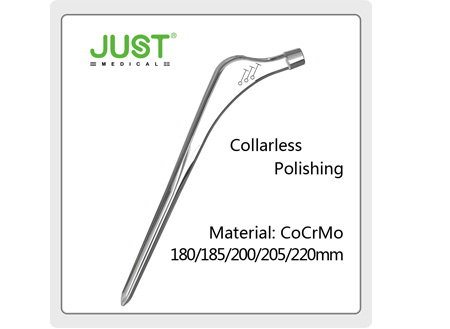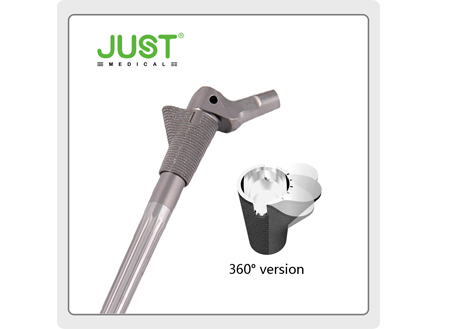What Conditions Require A Hip Replacement?
 May. 21, 2021
May. 21, 2021
Hip arthroplasty (hip replacement) involves the removal of a damaged or diseased hip joint and hip arthroplasty prosthesis with an artificial implant. This procedure is most commonly used to reduce the pain and improve the mobility of osteoarthritic symptoms of the hip that remain unresolved after conservative treatment. Next, the joint prosthesis supplier will introduce things you should know about hip arthroplasty prosthesis.
The most common type of this procedure is total hip arthroplasty, in which both the acetabulum (acetabulum) and the femoral head (the "ball" of the hip) are replaced.

TAICH LONG Femoral Stem Hip Joint System
Implant selection
Hip implants are divided into two categories.
single-piece implants, in which the socket and head are combined
Modular implants, in which each component can be used individually (and optionally)
These components can be plastic, metal, ceramic, or a combination of them. A spacer is placed between the two components to allow them to move easily.
Some implants can be held in place with acrylic cement or screws, while others are pressed into a fit (essentially pushed into place so that the new tissue that can accommodate it can grow).
All of these options have advantages and disadvantages and vary in durability.
Learn more:What Is the Best Type of Hip Replacement Implant?
Contraindications
Certain medical conditions may make the procedure completely contraindicated. Active infection and severe osteoporosis are two examples.
Although some believe that age is not a clear contraindication to hip arthroplasty.
However, because these joint prostheses wear out over time, having the surgery at a young age means you may need to have it redone at some point. Advanced age may sometimes be an exclusion factor for hip replacement when the risks of surgery are too great.
After considering your medical history, hip imaging, lifestyle, and determination to recover, your surgeon will make a judgment about the safety and need for hip replacement based on your specific situation.

Asm Hip Joint System
The purpose of hip replacement surgery
If you have tried other treatments to relieve your symptoms without success and they are severely affecting your daily life, your doctor may recommend a hip replacement.
These include pain medications, activity modification, physical therapy, and the use of mobility aids (such as walkers).
Hip replacement may be recommended if the hip joint is damaged due to
Osteoarthritis of the hip (the most common indication)
Rheumatoid arthritis
Injury/fracture
Osteonecrosis of the hip: when the blood flow to the bone is reduced and as a result, the bone tissue dies.
The damaged/diseased part of the hip joint is replaced with
Alleviate persistent hip pain
Improve joint mobility
Restore confidence and freedom of movement and improve quality of life
After 20 years, approximately 85% of hip replacement patients have achieved good outcomes. The American Academy of Orthopaedic Surgeons has called the surgery "one of the most successful procedures in all of medicine.
How to prepare
Preparation for a hip replacement begins a few weeks before the surgery and involves the process of getting your body ready for and recovering from the surgery, as well as practical issues.
Your doctor may have some suggestions for you.
Try to lose weight and quit smoking (if you have one) to reduce the risk of complications.
Stay active and do any exercise your doctor recommends to build strength.
Set up help for household chores, such as grocery operations, cooking, and cleaning.
Make sure your house is as safe and accessible as possible while you heal. For example, move commonly used items to an easily accessible area, clear clutter, consider raising the toilet seat, etc.
Secure recommended mobility aids, such as crutches or canes.
If you want to get more information about THR prosthesis for sale, please contact us.













